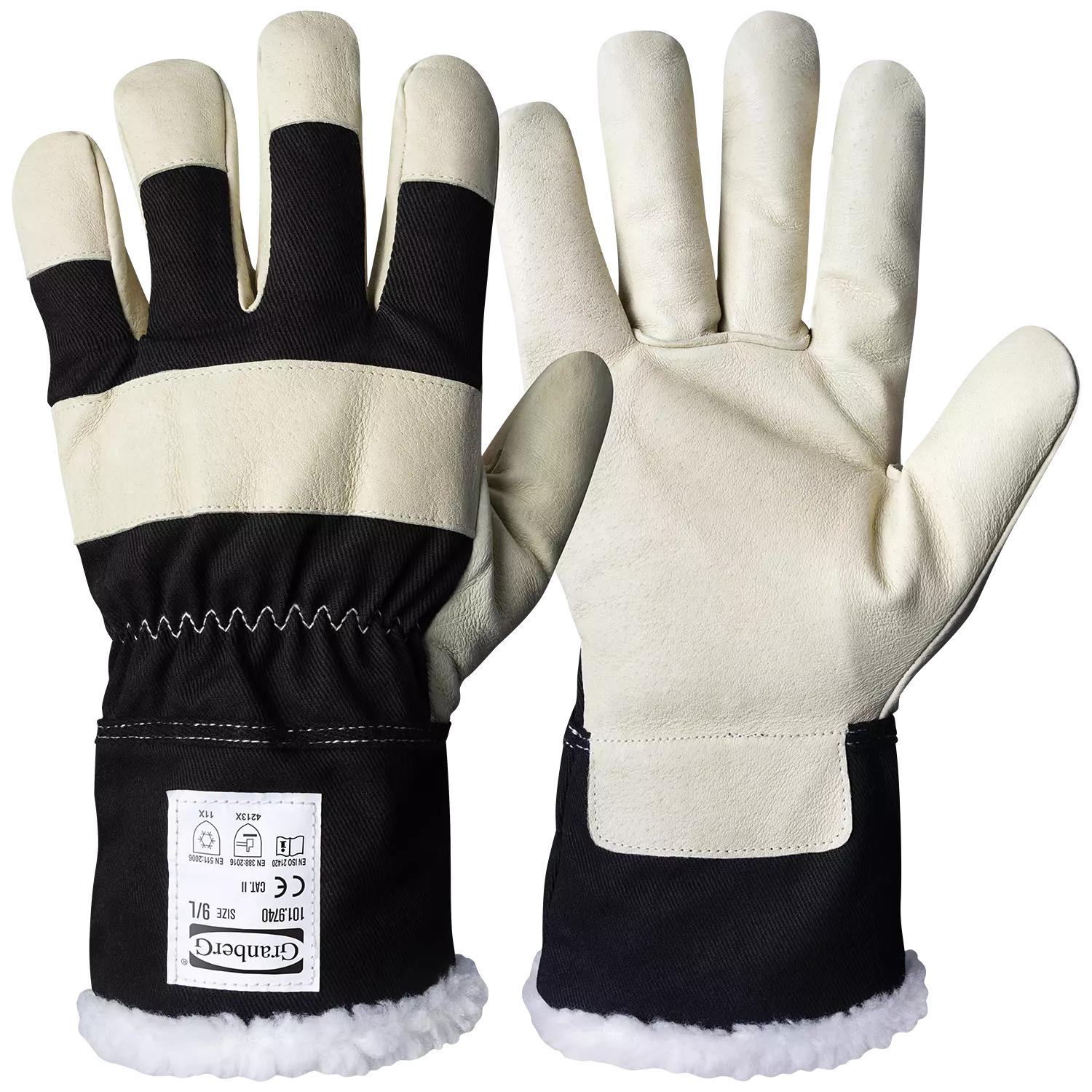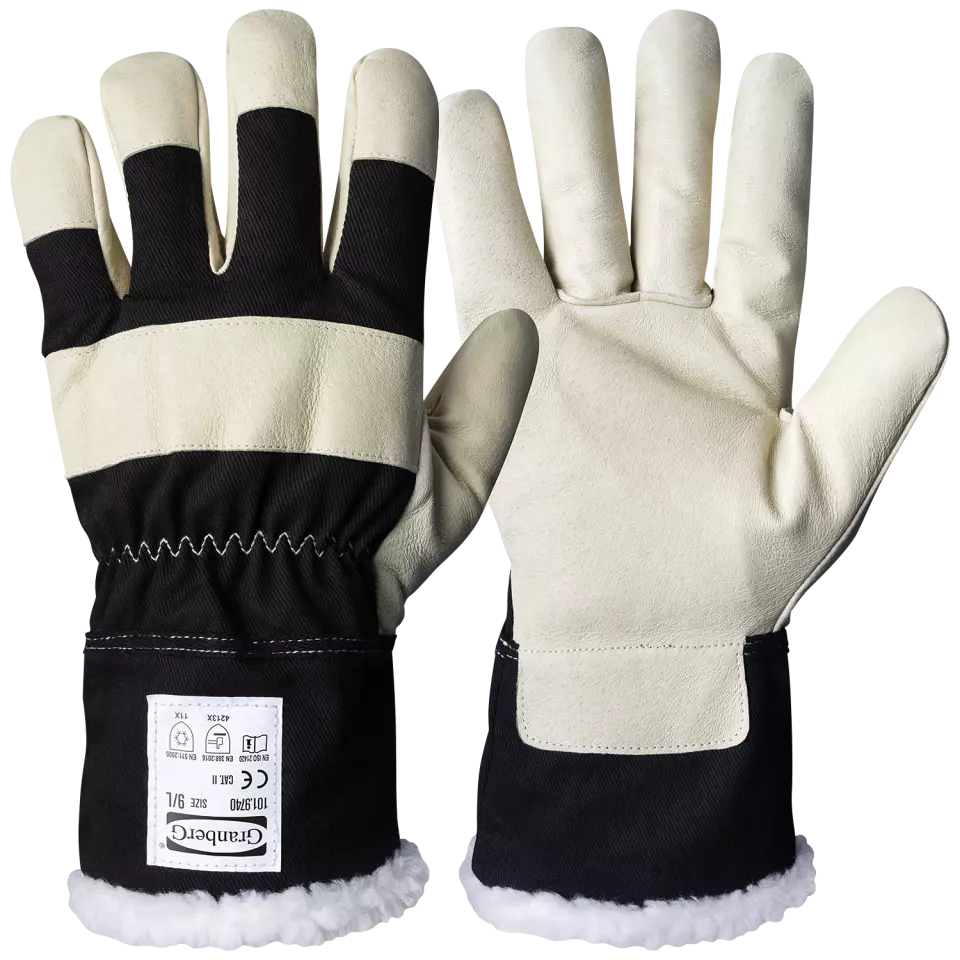
Features You'll Love

Palm Material · Pig leather
The material used on the palm side of the glove, affecting grip, durability, protection level, and comfort during use.

EN 388 · Abrasion Resistance Level 4, Tear Resistance Level 1, Puncture Resistance Level 3
EN 511 · Cold Contact Level 1, Convective Cold Level 1
Offers the highest level of protection against intense rubbing and wear from rough materials.
Provides basic resistance against snagging or catching on rough surfaces, offering minimal protection from tearing.
Withstands strong pressure from sharp objects like nails or thick splinters.
Provides light thermal insulation when directly handling cold objects. This offers basic protection for short or intermittent contact with cold surfaces, suitable for general tasks in cool conditions rather than prolonged exposure to extreme cold.
This glove provides light thermal insulation against the penetrating chill from cold air and wind. It is suitable for use in cool conditions, offering a basic level of protection to keep your hands warm.
Granberg
Work Winter Gloves, Beige/Black, 6 pairs
Work Winter Gloves, Beige/Black, 6 pairs
5 / 5
54,00 €
Price per 6 pairs
9,00 € / pair
Choose size
Free delivery
Features You'll Love

Palm Material · Pig leather
The material used on the palm side of the glove, affecting grip, durability, protection level, and comfort during use.

EN 388 · Abrasion Resistance Level 4, Tear Resistance Level 1, Puncture Resistance Level 3
EN 511 · Cold Contact Level 1, Convective Cold Level 1
Offers the highest level of protection against intense rubbing and wear from rough materials.
Provides basic resistance against snagging or catching on rough surfaces, offering minimal protection from tearing.
Withstands strong pressure from sharp objects like nails or thick splinters.
Provides light thermal insulation when directly handling cold objects. This offers basic protection for short or intermittent contact with cold surfaces, suitable for general tasks in cool conditions rather than prolonged exposure to extreme cold.
This glove provides light thermal insulation against the penetrating chill from cold air and wind. It is suitable for use in cool conditions, offering a basic level of protection to keep your hands warm.
Product description
These durable winter work gloves feature pig grain leather construction with superior wear resistance and excellent thermal insulation properties. The fully-lined design with 100% polyester interior provides enhanced warmth and comfort for cold weather conditions. The breathable construction combines with a loose fit to ensure optimal dexterity and comfort during extended wear.
Product Features:
- Pig grain leather with pasted cuff
- Breathable construction
- Loose fit design
- Fully lined winter protection
- Length: 27-30 cm
- Thickness: 1.0-1.2 mm
Technical Details:
- Back material: Cotton drill
- Liner material: 100% Polyester
- Palmside material: Pig grain
- Convective cold: Level 1
- Contact cold: Level 1
Protection Ratings:
- Abrasion resistance: Level 4
- Circular blade cut resistance: Level 2
- Tear resistance: Level 1
- Puncture resistance: Level 3
- Straight blade cut resistance: X
Recommended Applications:
- Outdoor work in cold environments
- Building and construction industry
Standards:
- CE Category II
- EN ISO 21420:2020